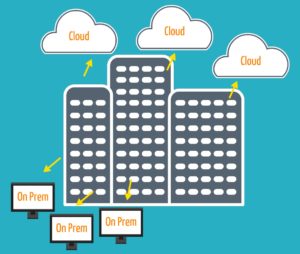Which Deployment Model is the Right Fit for You? Questions to Ask Yourselves…
Field service management organizations are concerned with improving business performance, service delivery, productivity in the field, and customer satisfaction. Field service management software will help you access customer data, provide better customer service, and increase sales. Businesses looking to invest in or switch software platforms have a lot of tough decisions to make; a major one is whether to deploy software in the cloud or on-premises.
- Are there any regulatory requirements to control your own data?
- Are third party providers allowed to handle your confidential information?
- How much integration is needed?
- Do you have several systems back-end where you need to pull data from?
- Are there customizations needed to meet your business processes?

However, if you do not have regulatory issues, nor need customizations or integration to in-house systems, then software-as-a–service (SaaS) would be a viable route.
The Benefits of Cloud Deployments:
- Pay per user
- Easy for monthly budgeting
- No additional license maintenance costs
- Limited commitment, usually a one year contract
- No upfront costs needed for acquiring new servers
- Multi-tenant hosting lowers costs and makes services affordable
- Security and Service Levels Agreements (SLAs) are the responsibility of the service provider
- Patches and updates are automatically scheduled without the need for dedicated I.T. resources to run this task
- I.T. can focus on strategy and aligning business goals rather than being a break-fix shop
Considerations:
- Before embarking, consider doing an integration assessment. Forecast a future state of your business and do a “what if scenario planning” session.
Ask your trusted consulting partners for a “current and future state” assessment. They will look under the hood to evaluate your business processes, maturity levels and provide recommendations that make sense for your business today and for the next five years.
